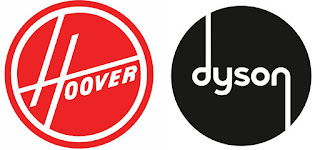James Dyson vs Hoover
4. James Dyson vs Hoover
What has made Dyson so successful is the use of a bagless vacuum cleaner which uses two cyclones. One removes small particles while the other collects larger items. This is the patented technology that bitter rival Hoover infringed.
According to Dyson, before him, nobody in the field had thought to sell a bagless vacuum cleaner. However, Alberto Bertali, managing director of Hoover European Appliances Group, claimed that the Tripple Vortex “ recirculated dusty air between three cyclones and did not filter it.”
A counterclaim that the Dual Cyclone’s technology was “nothing that was not generally known within the industry,” was dismissed by the High Court.
Unfortunately for them the High Court ruled that Hoover had intentionally copied the technology at the heart of Dyson’s Dual Cyclone vacuum cleaner. Dyson said: “Their claims that the Triple Vortex is different were shown to be completely false. Hoover showed no interest in the technology when we were looking for backers.
Then they rubbished it when we brought out the bagless cleaner, insisting that bags are best. Finally they came out with a blatant copy.”
The case centred on a patent taken out in June 1980 by Mr Dyson. It was the first of many patents taken out after 1978 when Mr Dyson became frustrated with a Hoover Junior and its cloth bag. While doing his cleaning, Mr Dyson was "struck by its inefficiency". He then replaced the bag in his Hoover Junior with a miniature cardboard cyclone made airtight with tape. It worked and he had made a crude bagless vacuum cleaner on a cyclonic principle.
The breakthrough that ensured his success came when he combined two cyclones. The inner conical cyclone removed small particles while the outer cylindrical one collected larger items. It was the patent covering this cyclone series that Hoover infringed. Mr Dyson told the judge that before his machine, nobody in the field had commercially proposed or sold a bagless vacuum cleaner. Alberto Bertali, managing director of Hoover European Appliances Group, said the judgment was a setback.
He repeated the Hoover claim that the Triple Vortex recirculated dusty air between three cyclones and did not filter it, therefore avoiding any infringement of the Dyson patent. He said: "We were looking for a much stricter interpretation of the patent."
The breakthrough that ensured his success came when he combined two cyclones. The inner conical cyclone removed small particles while the outer cylindrical one collected larger items. It was the patent covering this cyclone series that Hoover infringed. Mr Dyson told the judge that before his machine, nobody in the field had commercially proposed or sold a bagless vacuum cleaner.
Alberto Bertali, managing director of Hoover European Appliances Group, said the judgment was a setback. He repeated the Hoover claim that the Triple Vortex recirculated dusty air between three cyclones and did not filter it, therefore avoiding any infringement of the Dyson patent.
But Dyson failed to stop Hoover using the “Vortex” trademark on its bagless cleaners.




Comments
Post a Comment